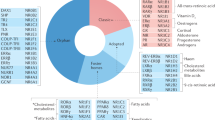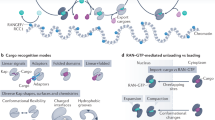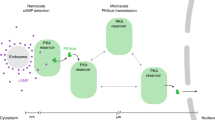Abstract
Since there have been very few studies on nucleolar signaling, an attempt was made to establish nucleolar signal pathways which link the cell membrane to the nucleolus for the transfer of extracellular signals. Two pathways were studied. One was the G α s mediated cAMP pathway where two signal molecules were yielded, including RII and protein kinase A. The other was the G α q mediated DAG/IP3 pathway which yields two signals including protein kinase C and IP3/Ca2+. By the studying isolated nucleoli from resting liver, regenerating liver or weak carcinogen thioacetamide treated liver, it was possible to detect protein kinase A (PKA), protein kinase C (PKC) and RII subunits. In addition, CK2 was detected. It was found that external signals transmitted through G protein coupled receptors could reach into the nucleolus and that physical translocation of signal molecules was an integral step involved in membrane-nucleolus linked pathways. When an in vitro assay of the above signal molecules was carried out using [γ-32P]-ATP, most kinase dependent phosphorylation was via the major CK2 (more than 95%). Therefore, it is suggested that the major CK2 dependent pathway is involved in 'house keeping' for nucleolar integrity and the minor pathways, dependent on PKA, PKC and others, are involved in subtle regulatory mechanisms such as 'extra-house-keeping' activities by nucleolar chromosomal remodeling.
Similar content being viewed by others
Article PDF
Author information
Authors and Affiliations
Rights and permissions
This is an Open Access article distributed under the terms of the Creative Commons Attribution Non-Commercial License (http://creativecommons.org/licenses/by-nc/3.0/) which permits unrestricted non-commercial use, distribution, and reproduction in any medium, provided the original work is properly cited.
About this article
Cite this article
Jeong, JS., Kim, IH., Lee, HJ. et al. Nucleolus contains signal molecules that constitute membrane-nucleolus linked pathway. Exp Mol Med 30, 205–213 (1998). https://doi.org/10.1038/emm.1998.30
Published:
Issue date:
DOI: https://doi.org/10.1038/emm.1998.30



